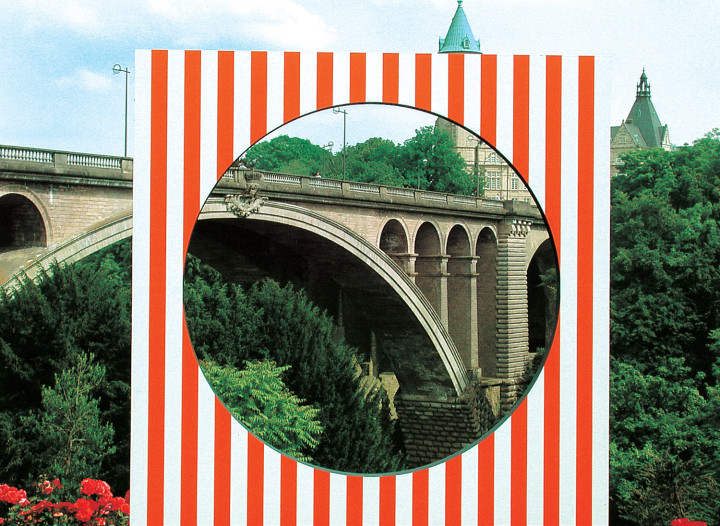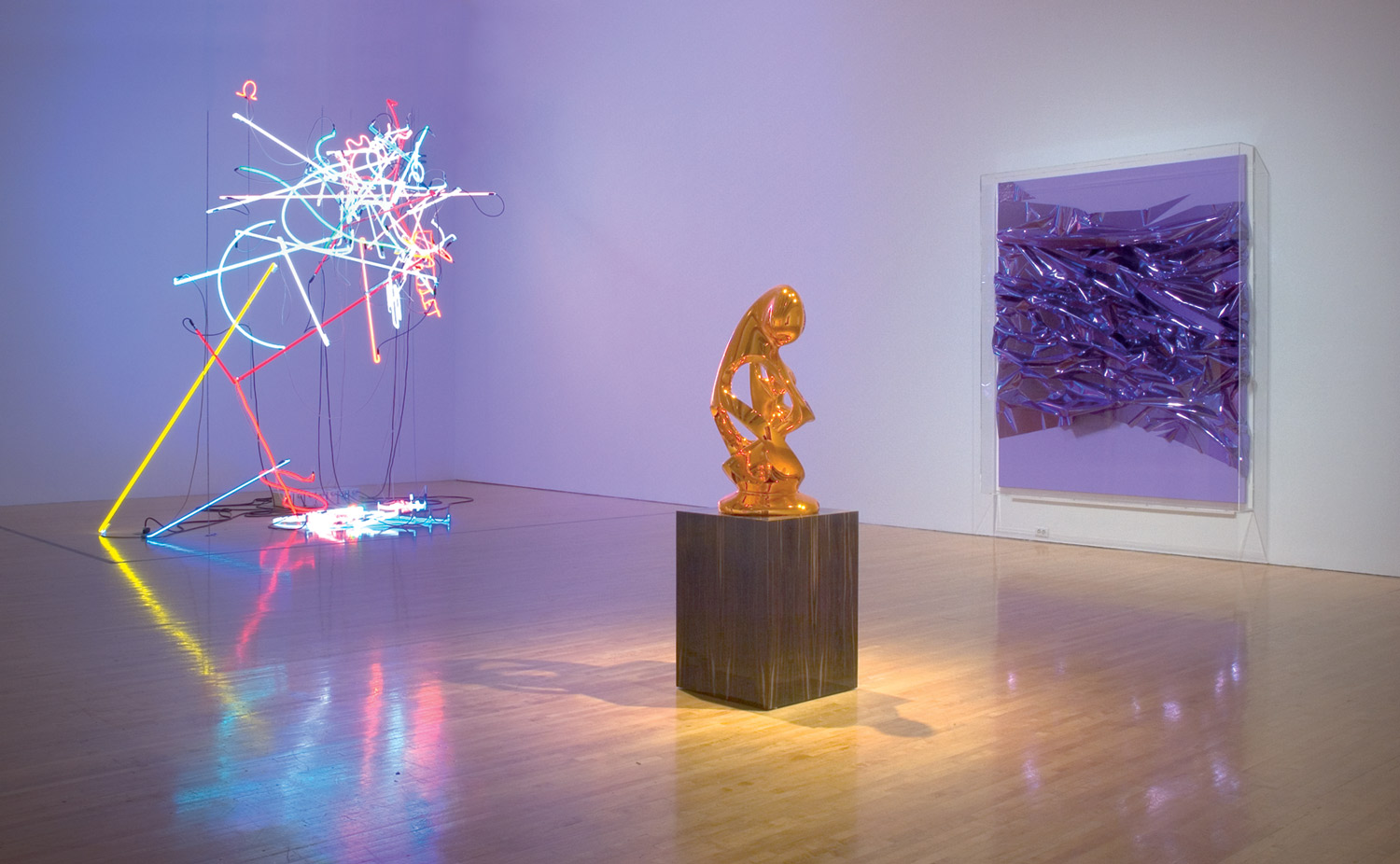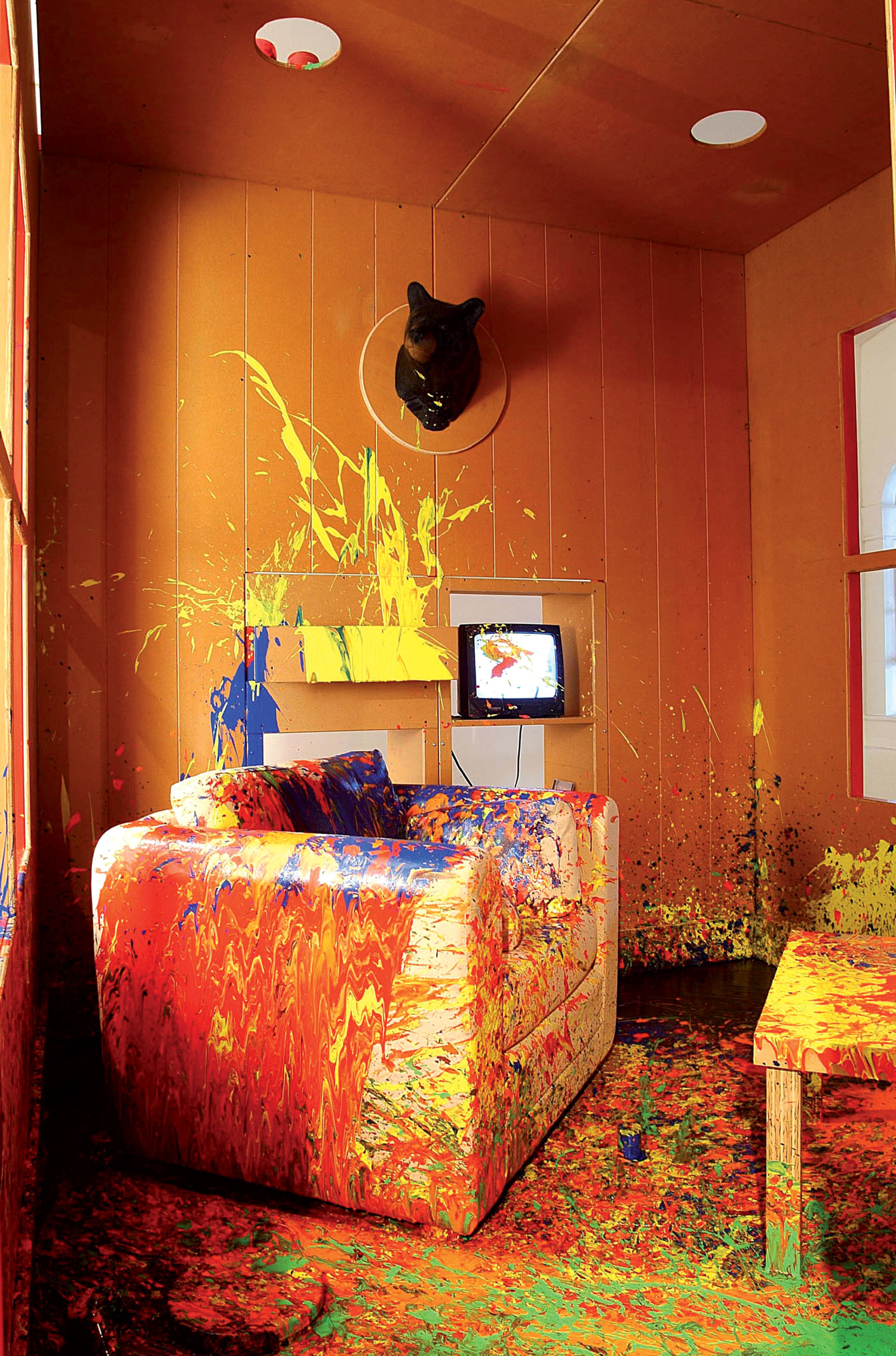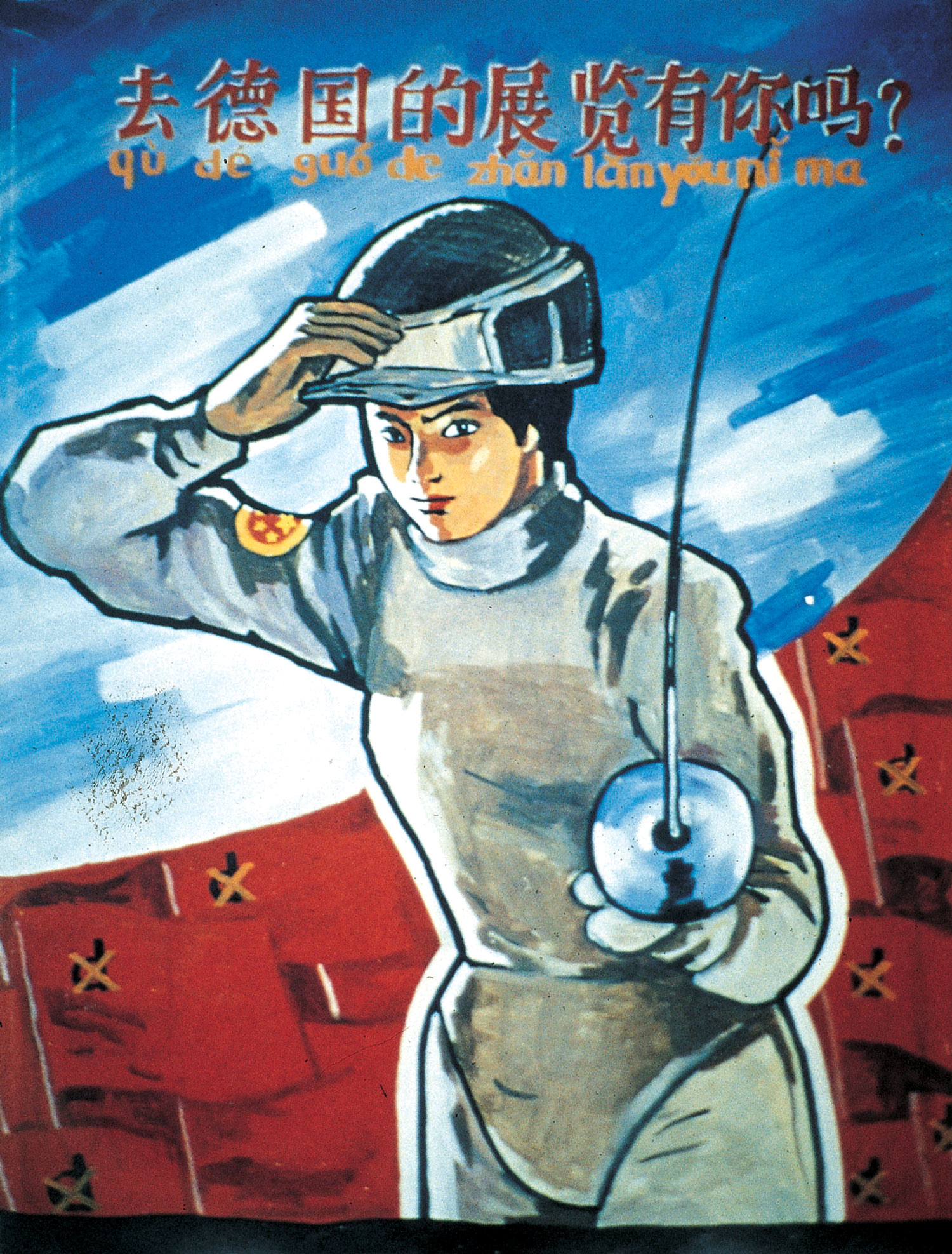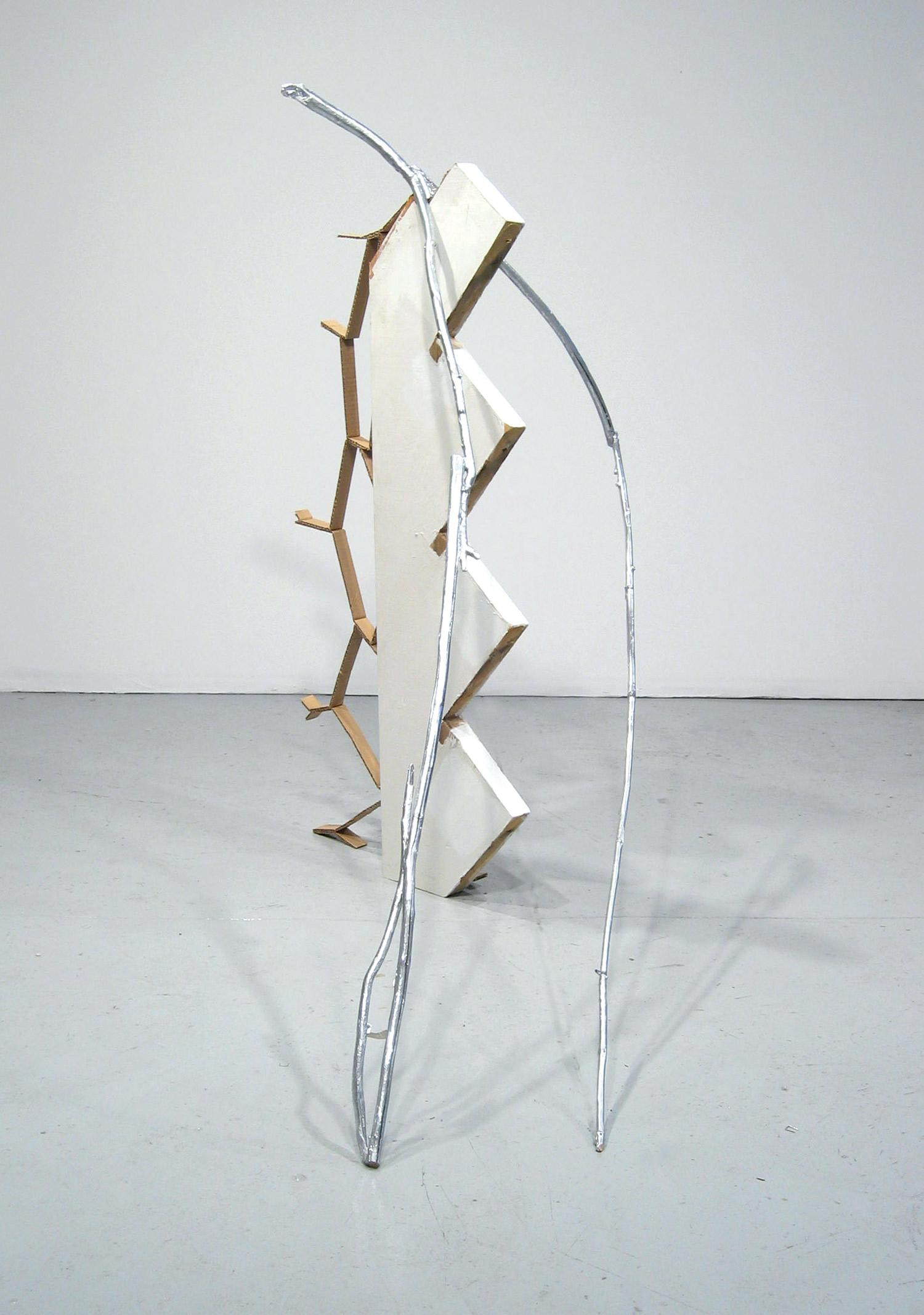
Jérôme Sans: Let’s start by talking about shows. How do you approach exhibition spaces? Are some better than others?
Daniel Buren: No space is uninteresting. If it be an alternative space, a space on the margins or an important institution, each space can be the possibility of doing a wonderful, experimental project. I do not necessarily give priority to big institutions. On principle, I like to be able to make a big difference between very well known places and more underground spaces, intervene as much in a closed down bakery as in New York’s MoMA, move from a space of 3,000 square meters to another of 10.
JS: You are known for your mad rhythm of travels and exhibitions. In one month and ten days you have done more than fourteen shows across the world.
DB: I am not competing for the Guinness Book of Records! It is true that it seems mad. Sometimes, when the exhibition schedules move, you get to this rather excessive rhythm, but if you are well organized you can face it.
JS: How do you consider the French scene which complains of its lack of visibility on the international scene?
DB: For me, this is a false question. Certainly, in the ’70s and ’80s, when I used to be invited to big international exhibitions, particularly abroad, I regularly found myself with a maximum of two or three French artists. At that time, few French artists were invited to big events, and this did not seem to be particularly unfair. Especially since the artists of my generation were, with a few exceptions, rather mediocre. The rare artists invited to these events did not participate in the leading French movement of that time: Support-Surface. Moreover, we were not invited as French artists, but for the work we were doing. Often nobody knew my origins and regularly took me for a Belgian.

In the ’70s, when France no longer had any audience, it still saw itself as the center of the world. Contrary to the Belgians, Italians or Germans who traveled en masse to see all the exhibitions happening in Europe and supported their artists, it was rare to meet any French, whether they be art critics, curators, gallery owners or collectors, in similar circumstances. On the other hand, the aftereffects of the American battle, directed for the most part against the School of Paris, did not make things any easier. It was at this time that France definitively lost its predominating place in the market. This reality lasted a long time and provoked numerous consequences until the end of the ’80s. It is a false idea to think that French artists have had no audience since the ’90s. We can no longer say that there are no French artists in exhibitions abroad.
If French artists do not always exist in the international market — and it is not a problem that they are not represented — moreover, if no French artist appears in the people column of well-known magazines or in the big Christie’s, Sotheby’s or Phillips sales, they are, despite everything, invited to big exhibitions everywhere, for the same reason as artists of other nationalities.
JS: Which French artists from the new generation do you feel close to?
DB: Philippe Parreno or Pierre Huyghe come to mind, as they each assert an original approach. I particularly like Philippe Parreno’s work, as it is not formally defined. You never know where he is going. He creates a loss of guidelines. As for other artists, I also like Adel Abdessemed, Ghada Amer, Igor Antic, Kader Attia, Pierre Bismuth, Antonello Curcio, Mohamed Elbaz, Alicia Framis, Manuel Franke, Athina Ioannou, Claude Lévêque, Didier Marcel, Friederike Mainka, Franck Scurti, Alessandra Tesi, Barthélémy Toguo, etc. But this list is obviously not exhaustive.

